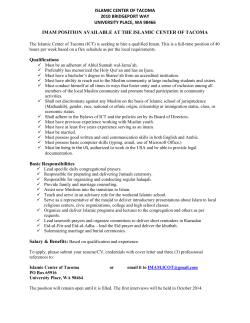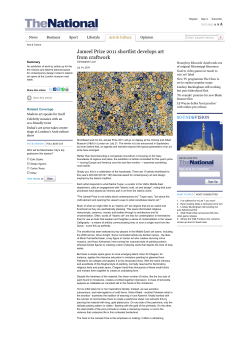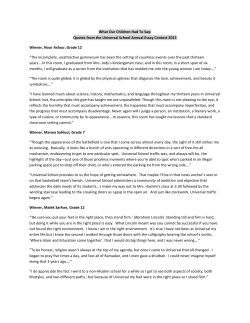
Islamic State, the offspring of Saddam
February/March 2015 The world in brief Iraq Despite its declaration of a new ‘caliphate’ based on jihadist principles, much of the senior leadership Islamic State is actually made up of Saddam-era Baath Party members. A study of the origins and make-up of Islamic State characterizes the jihadist group as a ‘spectral hold-over’ of the old regime. ‘Most of its top decisionmakers served either in Saddam Hussein’s military or security services. In a sense, ‘secular’ Baathism has returned to Iraq under the guise of Islamic fundamentalism.’ The authors, Syrian researcher Hassan Hassan, who hails from the town of Albu Kamal on the Iraqi border, and the American journalist Michael Weiss, write that this contradiction between secular and fundamentalist is more apparent than real. Despite the secular origins of the Baath party, Saddam Hussein used it to preserve the dominance of Iraq’s Sunni Muslims – only 20 per cent of the population – and repress the majority Shia. In the declining years of his rule Saddam Hussein adopted an overtly religious path, in the hope of co-opting the Sunni Muslim leadership. In fact, Saddam lost control of his so-called Islamic Faith Campaign and many Baath Party members fell under the spell of the imams. It was at the time of this campaign that the party allowed the man now known as Abu Bakr al-Baghdadi to attend the University of Islamic Studies in Baghdad and study for a doctorate. In 2010, after the Americans had all but wiped out the top cadres of Islamic State’s predecessor, Al Qaeda in Iraq, Baghdadi was chosen as the leader. He set about making it an Iraqi – rather than multinational – organization, and sought out people who could transform it from an insurgent group into a conquering army. He found his lieutenants from the victims of the US de-Baathification campaign and among fellow inmates at the US Camp Bucca detention centre in Iraq where he spent a year in 2004. Baghdadi is seen by some researchers as the rightful heir of Saddam, with the latter’s persecution of the Shia warped and magnified into a genocidal ambition to annihilate them. Not surprisingly, Islamic State likes to scramble the CVs of its top leadership. The authors say no one should be surprised at their conclusions. The US has been 6 | the world today | february & march 2015 GETTY IMAGES Islamic State, the offspring of Saddam Abu Bakr al-Baghdadi, leader of Islamic State fighting the Islamic State for a decade and ought to know it well. But the group’s slick propaganda and the media’s preference for sensationalizing the jihadists have drowned out the more prosaic narrative – that of the attempted return of the Baathists under different guise. Hassan and Weiss argue that Islamic State is a product of a rift in jihadist ranks, between Osama bin Laden, who favoured taking the fight to the ‘far enemy’, America, and Baghdadi who focuses on wresting Iraq from Shia control and toppling the Arab leaders who have failed to challenge the rise of Iran. Whether giving more prominence to the reality of the organization’s makeup will curb the appeal of its propaganda is an open question, however. ISIS: Inside the Army of Terror, by Hassan Hassan and Michael Weiss, Regan Arts
© Copyright 2025





















